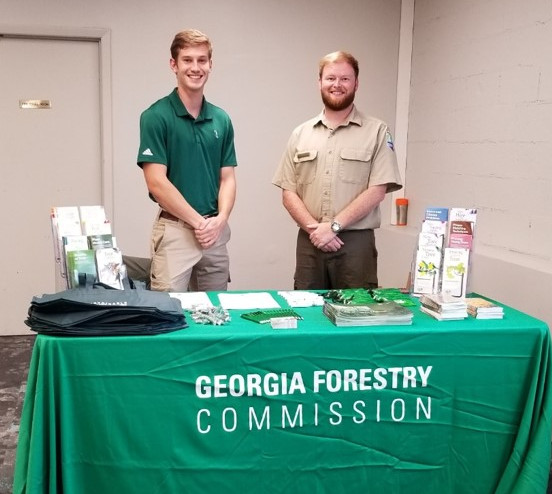 Guest Blog by William Knapp
Guest Blog by William Knapp
GFC Urban and Community Forestry Intern
Hello, my name is William Knapp and I got the opportunity to work for the Georgia Forestry Commission this summer as an urban and community forestry intern. I study community forestry and arboriculture at the University of Georgia. My advisors spoke highly of the Georgia Forestry Commission and its staff, so they suggested I apply to intern here. Over the summer, I experienced and learned many incredible ways trees impact our people and our state, so I am happy that I got this opportunity.
Most people think of forestry as growing and cutting down forests for timber so that we can produce the things we need. However, the trees we live around daily in our urban forests are just as important. Urban or community trees provide many benefits, such as heat reduction, shade, stormwater management, improved air quality, and also, very importantly, a sense of place and community. While these trees benefit us all, they are still often overlooked and can suffer from poor management practices, development, and other facets of life that can lead to tree decline. Interning with the Urban & Community Forestry Department showed me how the Georgia Forestry Commission works to maintain and improve our urban forests.
Throughout the summer, I worked with several community foresters on projects to support our communities’ green infrastructure. For instance, in several different cities, we worked on tree inventories. These data collections on an area’s trees include their geographic location, health, and other management information. It can be beneficial to determine if we are losing or gaining tree canopy in an area and if the trees are being taken care of. When trees aren’t being supported through best management practices, the community foresters can offer technical assistance and advice to individuals and communities on how to support their trees better. Each team member is a certified arborist with extensive tree care and biology knowledge.
The GFC also offers many financial opportunities for communities to support their urban forests. Often, smaller municipalities do not have substantial budgets or staff to focus on city trees. I attended and supported local tree boards with community foresters – volunteer groups of citizens who want to help their urban forests. We could offer them grant support in a few different forms at these meetings. For example, a GFC “Making the Shade” grant gives money to schools to plant trees around playgrounds and shade their kids at recess. The Georgia Releaf grant supports communities that want to improve green infrastructure, mitigate tree canopy storm damage, and address tree canopy inequality. I think these are awesome ways to help smaller communities receive the benefits of a stronger urban forest.
My favorite day at GFC was when GFC Sustainable Community Forester Specialist Alex Ballard and I staffed a table for a youth career day in Atlanta. It focused on showcasing different jobs in the green industry. We had a great time telling the students what the commission does in our state.
